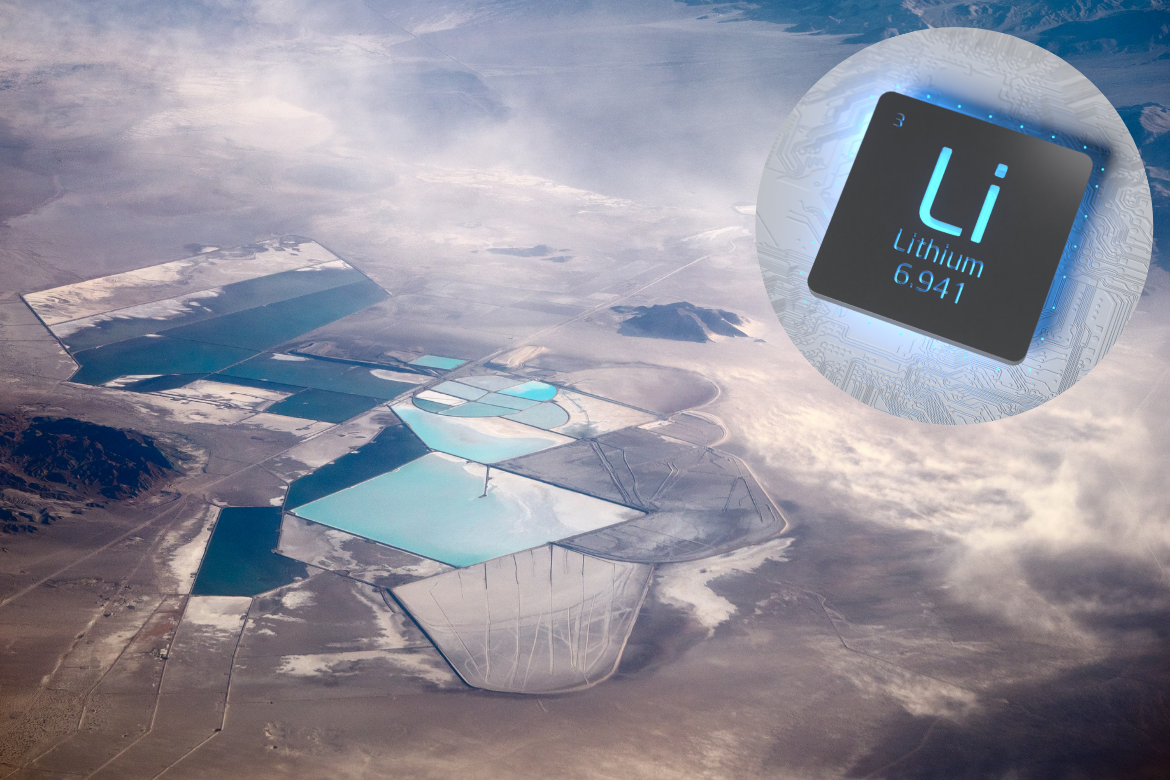A ticker-tape parade was the only thing missing when lithium deposits were discovered in southwest Wyoming near Rock Springs in 2013. At the time, there was one working lithium mine in the US; unfortunately, that’s still true.
Demand for lithium was high then and has skyrocketed to meet its use in rechargeable and EV batteries. Globally, lithium output is on track to triple over the next decade, but demand for electric vehicles will exceed that supply. The math? Each battery uses approximately 17 pounds of lithium plus cobalt, nickel, and other metals.
Wyoming’s deposit is in brine, salty water from our ancient seas. But, extracting lithium from brine occurs in several spots worldwide, so that wasn’t a significant issue. However, the state’s Geological Survey reported in 2015 that the deposits at the Rock Springs Uplift ranged from 90 to 105 parts per million, while the other brine mines have concentrations over 200 parts per million. However, weak lithium concentrations aren’t the only issue a mine would face. US miners will not work for the same wages as those in Argentina, Chile, and China. And, environmentally, mining would create approximately 250 billion gallons of dirty salt water to dispose of. So, the opportunity quietly faded away with little fanfare.
The 2015 report is not the final word on Wyoming’s lithium, though. Discoveries of the rare metal continue in Wyoming. Chariot Corporation is claiming the first hard rock lithium discovery in Wyoming with ‘strong’ lithium-tantalum mineralization at its Black Mountain Project. Chariot says that assays demonstrate lithium and tantalum values up to 3.79% Li2O and 230 parts per million Ta2O5, respectively. Chariot plans to extend testing and run preliminary induced polarization (IP) lines in Q3 2024.
Eight drill holes have been completed to date; once drilling is complete in March, assays for the other five drill holes should be announced in April 2024.
There is lithium in Wyoming, but commercialization remains the question. In the meantime, potentially the largest deposit in the world was recently discovered in an ancient super volcano in Nevada and Oregon, with an estimated 20-40 million metric tons that would dwarf deposits in Chile and Australia’s lithium.
Volcanologists and geologists from Lithium Americas Corporation, GNS Science, and Oregon State University reported their findings in the McDermitt Caldera in a paper published in Science Advances on August 31, 2023.
Meanwhile, Patriot Lithium will ramp up its efforts in the Black Hills in South Dakota in the coming months. Mapping and sampling programs will occur across the remaining Keystone and Tinton West claims, within the same region as Iris Metals’ Beecher Project that returned ‘outstanding’ initial drill intercepts.
The United States imports most of its lithium from China, with a $9.3 billion trade value in 2023. $1.3 billion of lithium-ion batteries came from South Korea, and $1 billion came from Japan.
To spur domestic development, the US Department of Energy awarded $2 million to split between three winners of its first-ever American-Made Geothermal Lithium Extraction Prize. The three winners, the University of Illinois Urbana-Champaign―Team SelectPureLi, University of Virginia―Team TELEPORT, and George Washington University―Team Ellexco, are tasked with finding viable solutions for lithium extraction.
Lithium mining requires a lot of water—one ton needs 500,000 liters. It also causes pollution and can increase carbon emissions (Columbia Climate School). The DOE prize aims to find responsible ways to extract the sought-after mineral.
But Here’s the Rub…
Other challenges surround lithium in the US. For example, China is investing in US mining operations, enabling it to maintain global dominance and potentially get loans from the federal government in the process. Lithium Americas, a Canadian-based company, is moving through federal permitting for a lithium mine in northern Nevada. The largest shareholder of Lithium Americas is Chinese Ganfeng Lithium.
Another challenge to manufacturing lithium batteries in the US is the absence of a domestic lithium pipeline. Creating this line involves digging new surface mines. An alternative solution has been emerging in the form of geothermal brine, and the US Department of Energy is pulling out all the stops to promote it—if they can convince residents and environmental organizations that mining operations should tear up large sections of the countryside for EV batteries.
The Summit Lake Paiute Tribe, Reno-Sparks Indian Colony, and Burns Paiute Tribe have protested the construction of a new lithium mine, bringing it to the courts as the location would disrupt a sacred site. Proposed lithium mines in North Carolina and Maine are also facing similar hurdles. Now, the Department of Energy is supporting the development of a geothermal brine supply chain for lithium-ion EV batteries using Direct Lithium Extraction technology. DLE pumps geothermal brine to the surface, extracts the lithium, and then sends the spent brine back underground. The solution offers less surface disruption and eliminates vast open-air lagoons. The technology, invented in the 1980s, has difficulties scaling it into a commercially viable operation.
The Salton Sea in California has DLE activity, and the Department of Energy found DLE technology could produce more than 3,400 kilotons of lithium, or enough to manufacture more than 375 million EV batteries at the site.
Standard Lithium is a lithium extraction startup. The company claims it produced >99.9% purity lithium carbonate with “start-to-finish direct extraction of lithium from brine in Arkansas; production of purified, concentrated intermediate; final conversion to high-purity battery quality lithium carbonate end-product.” Conversion of the lithium chloride to carbonate using a conventional process is ongoing and is being performed by a third-party OEM/vendor in Plainfield, Illinois. Data from these tests will be released when available.
With advances in technology, hopefully, the commercialization of US lithium will soon be possible.

